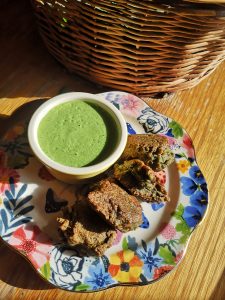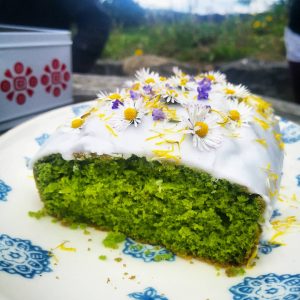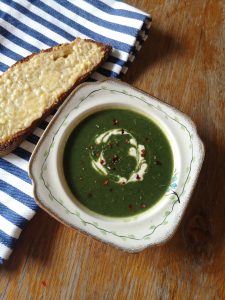
Provided by Leanne Townsend. https://www.wildfoodstories.co.uk/
Nettles (Urtica dioica) are one of the most easily identifiable of the edible “weeds”. They grow abundantly for a large part of the year and can be found growing profusely in both rural and urban areas. They are one of the most well-known plants, and children learn to identify them at a young age after having been stung by them a few times! Nettles are a wonderful wild edible with a long history of use in food and drink. They are a plentiful and flavoursome food source and are wonderfully healthy – they boast a broad range of vitamins and minerals including Vitamins A, C and K, various B vitamins and Iron, Calcium and Magnesium. In fact, they contain many times more nutrients than some of the cultivated green leaves that are a more common feature in our diets. Nettles are hugely abundant in Scotland, and can be found everywhere, you probably even have them growing in your garden. They can also be found on waste and cultivated ground, hedgerows, parks and woodlands. Given they are abundant, easy to identify, versatile in the kitchen and packed full of health-boosting nutrients, nettles are the ideal wild edible for experienced and amateur foragers alike.
Nettles are best harvested when they are fairly young and tender. Even when a bit older, you can harvest the top three or so pairs of leaves as these will be the most tender and flavoursome – though once the plant has gone to seed, the leaves will be too old and tough to use in food, and at this stage they contain oxalate crystals which can irritate the urinary tract. To extend the period you can harvest nettles you can cut them back and they will produce new shoots which you can harvest. Most people wear gloves to harvest nettles for obvious reasons, though I have been known to be too lazy for this – I quite like a little bit of a tingle in my fingers, but it’s easy to go too far and regret it later! Nettles aren’t usually eaten raw (for obvious reasons), but cooking or dehydrating the leaves will remove the painful sting. Again, use of gloves is advised when washing and preparing nettles for the pot.
Nettles are part of our food heritage here in Scotland. Classic recipes include nettle soup and nettle beer. They can be used in much the same way you would use spinach, though they have their own unique flavour – I find them somewhat herbal, and unlike any other vegetable. They can be wilted and used in a delicious pesto, or add them to curries, dahls, stews and stir fries. I also use them to replace the spinach in Spanakopita (spinach and feta filo pie). This season alone I’ve made all kinds of recipes with nettles, including oatcakes, cordial, soups, sourdough bread, pesto, pasta dishes and even cake! This video shows how I make nettle soup, along with my 11 year old son Sam: https://www.youtube.com/watch?v=PE06-ru4VJo&t=28s and you can find recipes for nettle cake and wild weed chilled soup on my website here: https://www.wildfoodstories.co.uk/blog
Nettles are also a great addition to drinks. The cordial can either be topped up with sparkling water or added to cocktails (it works especially well with gin).
So now you know – nettles are an abundant, delicious and versatile superfood which you most likely have growing in your back garden or in a nearby woodland or park. So what are you waiting for? Grab a pair of gloves, some scissors and a basket, and get harvesting!
For more recipes and inspiration take a look at my Instagram feed at https://www.instagram.com/wildfoodstory/



